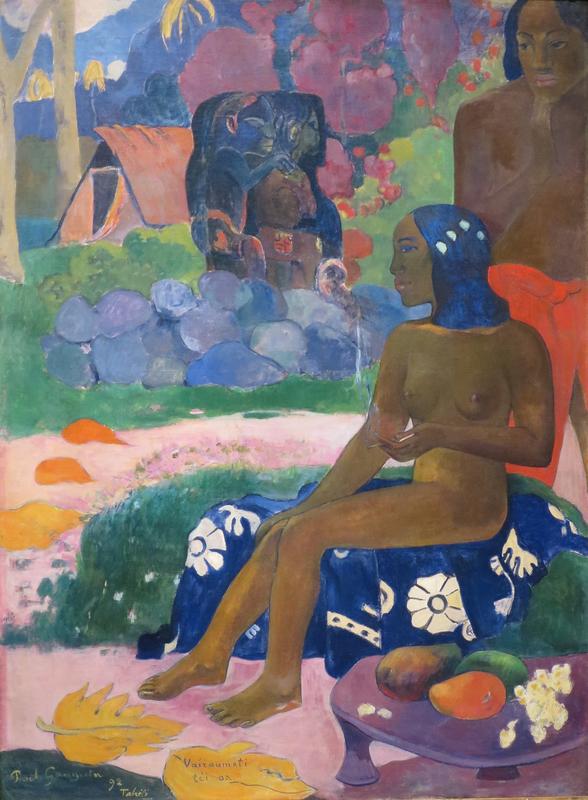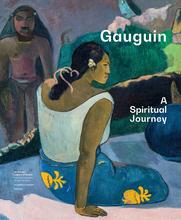More about Vairumati tei oa (Her Name Vairaumati)
- All
- Info
- Shop

Contributor
Vairaumati Tei Oa (Her Name Vairaumati) shows us the full extent of Gauguin’s appropriation of Polynesian culture.
Gauguin did not have access to many books in Tahiti but the few that he did have made an impact. They were Jacques-Antoine Moerenhout's Voyage aux îles du Grand Océan and Edmond de Bovis' État de la société tahitienne à l'arrivée des Européens, which were accounts of forgotten Tahitian culture. These books, combined with the stories that his lover Tahe-mani told him, gave him plenty of material to work with.
He then painted what he heard and read and sent his paintings to Paris where his gallerist attempted to sell them. One such painting is Vairaumati Tei Oa which translates to “Her Name Vairaumati.” Vairaumati is not the name of the model who sat for this piece, but the name of a woman who became the lover of the god Oro, who chose Vairaumati to be his female counterpart in the founding of a race of people. When Oro found her, he extended a rainbow to earth, where she welcomed him with a bunch of fruit and super intricately embroidered fabric. Then they did the dirty and populated the earth.
Gauguin took the story and ran with it. He updated the story and depicted Vairaumati as a Tahitian woman surrounded by a tropical landscape. He made Vairaumati kind of look like those paintings of Egyptian people before they figured out how to accurately depict the body. She’s stiff and awkward but it’s fine, she’s fine. She’s depicted waiting for her god-lover Oro to come back so they can keep procreating. There is a huge carved idol of Oro in the background of the piece. We’re not super sure who the man behind her is but it probably doesn’t matter. Vairaumati has her fruit and what looks like a cigarette, so she’s all set.
Sources
- Hargrove, June. ""Woman with a Fan": Paul Gauguin's Heavenly Vairaumati: A Parable of Immortality." The Art Bulletin 88, no. 3 (2006): 552-66. http://www.jstor.org.libproxy.newschool.edu/stable/25067267.
- "Her Name Is Vairaumati (Vairaumati Tei Oa) By GAUGUIN, Paul." Wga.hu. Web. 24 Oct. 2018. https://www.wga.hu/html_m/g/gauguin/04/tahiti22.html
- "Vairaumati Tei Oa (Her Name Vairaumati) - The Pushkin Museum Of Fine Arts." Arts-museum.ru. Web. 24 Oct. 2018. http://www.arts-museum.ru/data/fonds/europe_and_america/j/2001_3000/616…
Featured Content
Here is what Wikipedia says about Vairumati tei Oa

Vairumati tei Oa is an 1892 painting by Paul Gauguin, produced during his time in Polynesia. Its title translates as Her name was Vairaumati. It remained in the artist's family before passing to Ambroise Vollard's gallery in Paris. Sergei Schukin acquired it from the latter in 1904 and in 1918 it was acquired by the 1st Museum of New Western Painting. Since 1948 it has been in the Pushkin Museum in Moscow.
Check out the full Wikipedia article about Vairumati tei Oa













